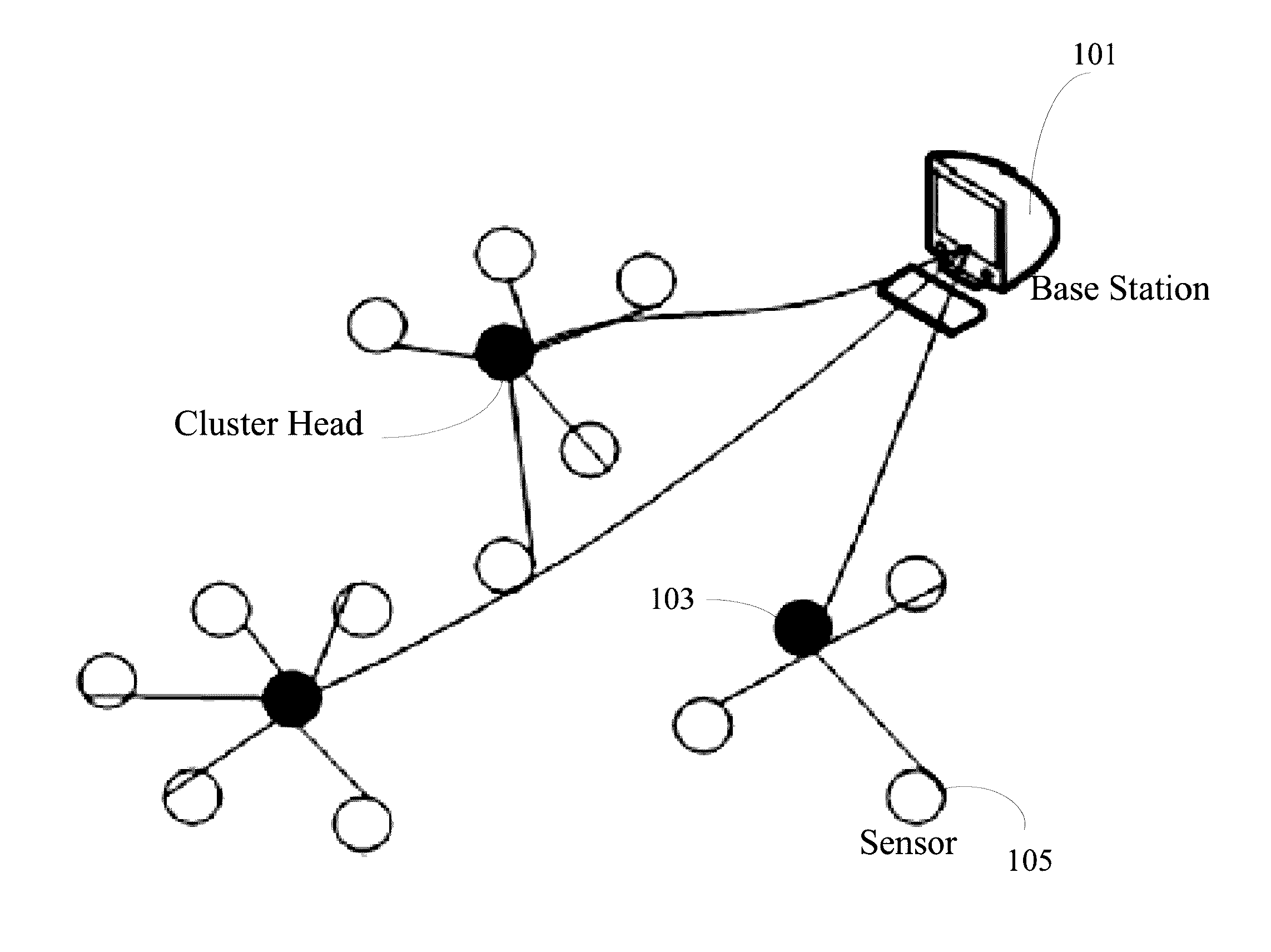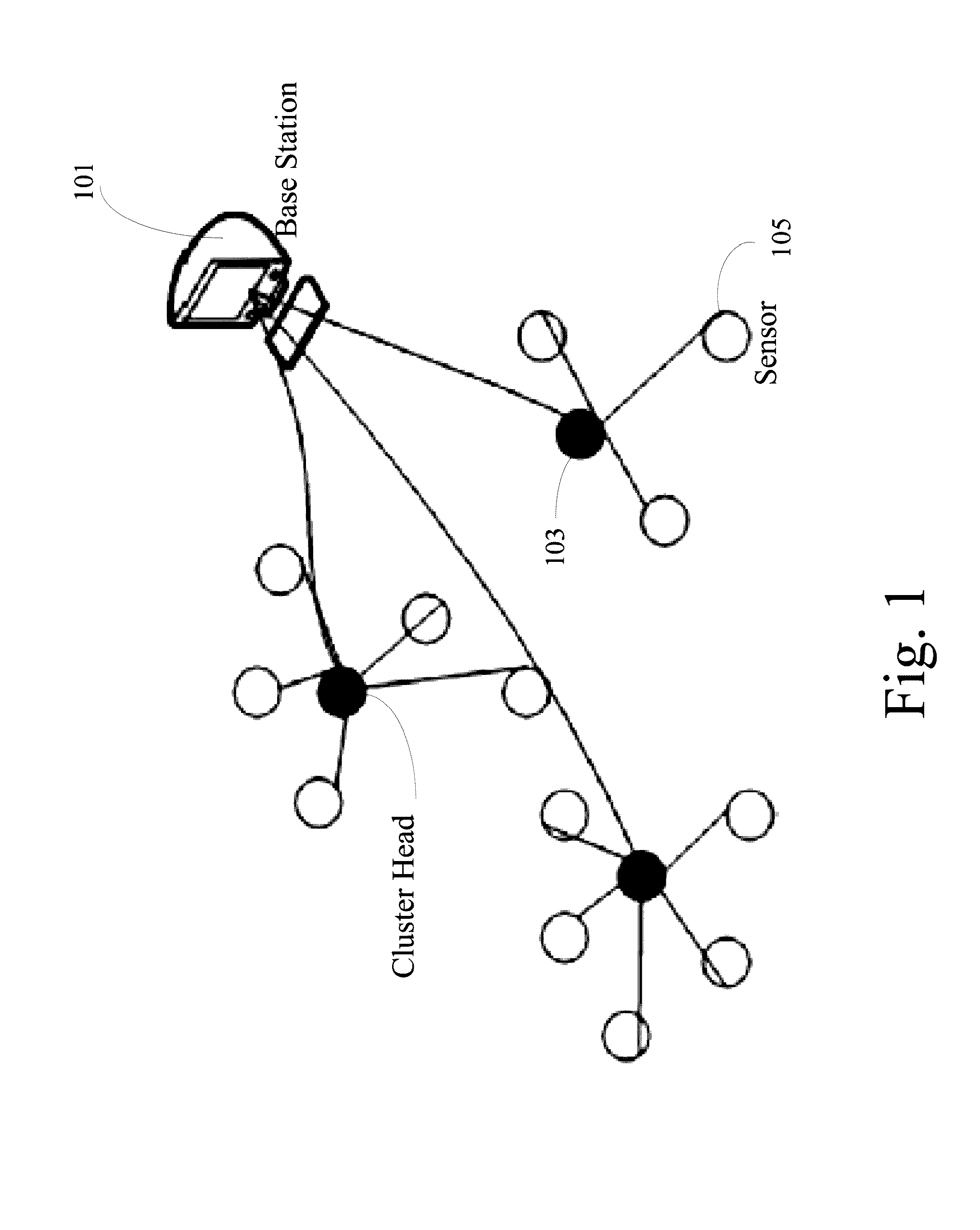Apparatus and method for evaluating wireless sensor networks
a wireless sensor and network performance technology, applied in the direction of wireless communication services, digital transmission, machine-to-machine/machine-type communication services, etc., can solve the problems of inefficiency of ad-hoc network routing protocols, limited resources of wireless sensor nodes in processing, storage and communication, and inability to assume the truth
- Summary
- Abstract
- Description
- Claims
- Application Information
AI Technical Summary
Benefits of technology
Problems solved by technology
Method used
Image
Examples
Embodiment Construction
[0039]Exemplary embodiments are illustrated in the referenced figures of the drawings. It is intended that the embodiments and figures disclosed herein are to be considered illustrative rather than restrictive. No limitation on the scope of the technology and of the claims that follow is to be imputed to the examples shown in the drawings and discussed herein.
[0040]In what follows a presented a detailed description of the LEACH and LEACH-C protocols used herein to determine the performance of wireless sensor networks. LEACH is Low Energy Adaptive Clustering Hierarchy (LEACH) protocol. LEACH is a clustering-based communication protocol that forms clusters of the sensor nodes based on the received signal strength and use local cluster heads as routers to the sink. In doing so, the LEACH incurs the advantageous ability of saving energy since the transmissions will only be done by such cluster heads rather than all sensor nodes.
[0041]FIG. 1 illustrates an exemplary cluster head formatio...
PUM
 Login to View More
Login to View More Abstract
Description
Claims
Application Information
 Login to View More
Login to View More - R&D
- Intellectual Property
- Life Sciences
- Materials
- Tech Scout
- Unparalleled Data Quality
- Higher Quality Content
- 60% Fewer Hallucinations
Browse by: Latest US Patents, China's latest patents, Technical Efficacy Thesaurus, Application Domain, Technology Topic, Popular Technical Reports.
© 2025 PatSnap. All rights reserved.Legal|Privacy policy|Modern Slavery Act Transparency Statement|Sitemap|About US| Contact US: help@patsnap.com



